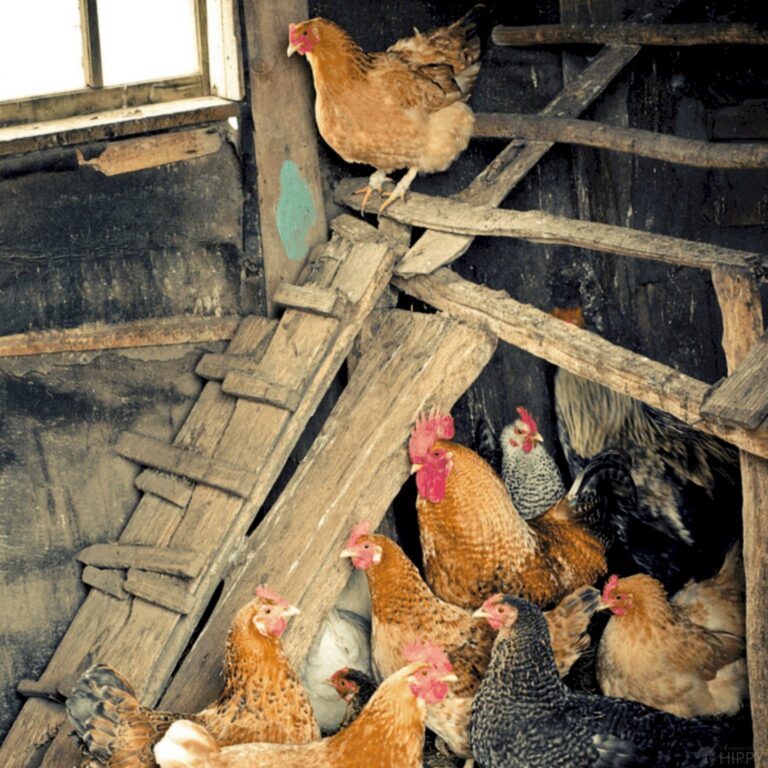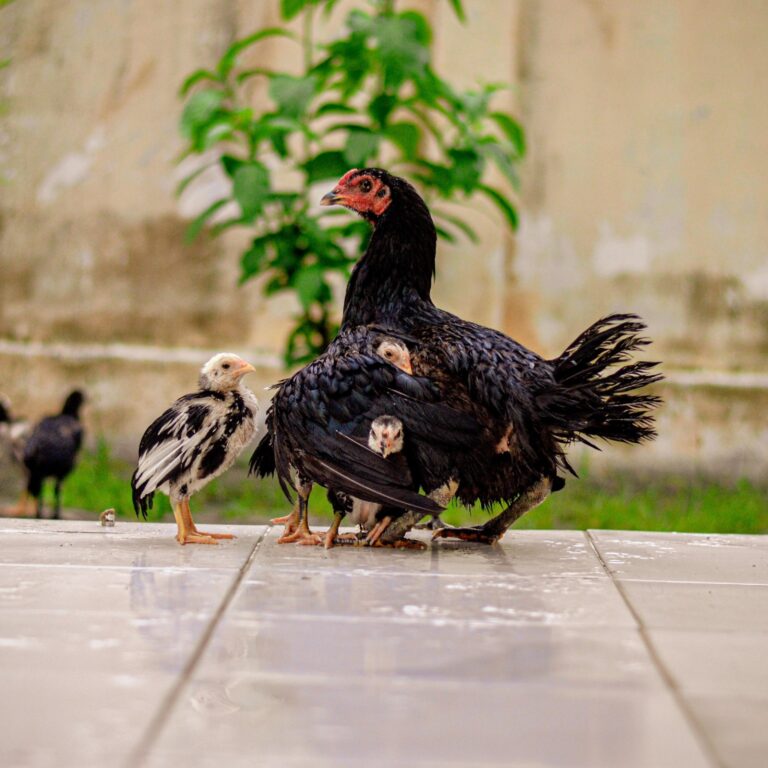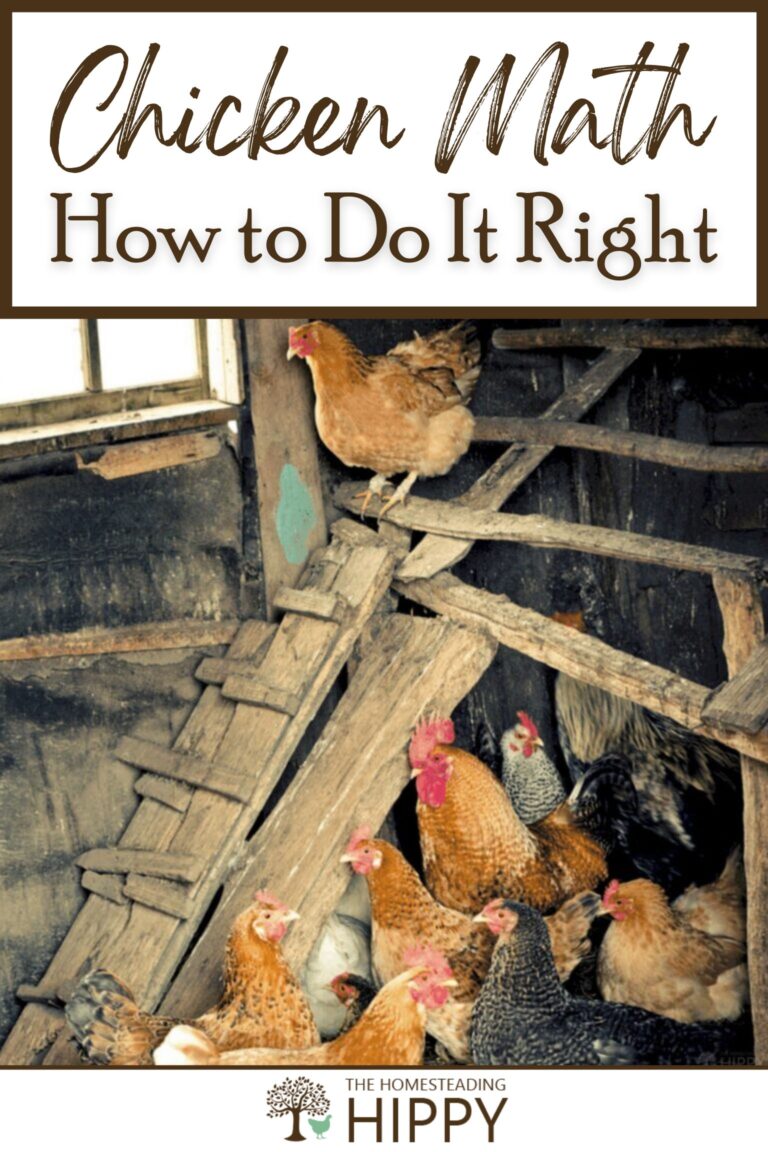Whether you have a small starter flock or a large and prosperous one, keeping track of your chickens for various purposes is an important part of the undertaking.

After all, if you don’t know how many chickens you have and what you are doing with them there’s no way that you can know what you can expect from them.
It also makes it a lot harder to justify the endeavor that is slowly taking over your entire life when it comes to friends and loved ones!
It’s easy to feel overwhelmed and just give up when you see a blur of chickens, all colors and all kinds, running to and fro across your property or in the run- but you don’t have to feel that way!
All you need to do is learn chicken math and your worries, and your problems, will become a thing of the past.
This esoteric method of poultry accounting has been passed down for generations, and the day has come for me to teach it to you.
Grab your tablet, sharpen your pencil and let’s get going.
Table of Contents
What is Chicken Math, Exactly?
Chicken math is exactly what the name suggests: math for chickens, or rather it is math for keeping track of your flock size.
Chickens can’t do math themselves, except one formula: f+1, where f is the value of how much food they have. All they know is that they need more food.
But never mind that, we’re talking about chicken math here, this is serious. As I mentioned above, chicken math is a process of calculating how many chickens you have.
That’s it. It’s nothing more than simple arithmetic, I promise.
There are definitely no complicated formulas, you aren’t going to need any calculus or trigonometry, and you definitely aren’t going to have to go through any complicated mental gymnastics. It’s simple arithmetic, arithmetic that anyone can learn.
And by learning it, you will improve your life and the life of your flock for the better.
Why Do I Need to Learn Chicken Math?
You need to learn chicken math so that you can effectively keep track of your chickens, the growth of your flock, the cost of raising your flock, and also the productivity of your flock.
The productivity of your flock is things like eggs or meat but it can also be things like chicken feathers, chicken snuggles, ambient noise levels, even chicken fertilizer if you take my meaning. Whatever you want!
Only by knowing how many chickens you have, and how many chickens you are going to have, can you plot your journey as a backyard chicken keeper or a prosperous big-time chicken farmer.
Trust me, this is serious business and you never want to take the keeping and care of any animal lightly.
Doing so is only going to set the stage for disappointment, aggravation, and financial insolvency.
Understanding the Values of Your Chickens
The very first thing you need to understand when learning chicken math is that every chicken gets a value assigned to it. Simple as.
Luckily, this is as easy as it gets: a chicken, any chicken, has a value of 1. Adult birds, pullets, cockerel, standard, bantam breeds, meat birds, egg production birds, it doesn’t matter.
Done deal! This makes it extremely easy to determine the total number of chickens you have by counting the number of chickens and then adding all of their values together.
I know what you are thinking, and no: There is no catch, and only in the rarest of circumstances will a chicken have a value other than 1. Stick with me, I promise the calculations will be totally clear by the time you are through the next section.
Example: Chicken Math in Action
For instance, if you have seven chickens, each chicken has a value of one, so 1 x 7 = 7 and, ta-da, you have seven chickens.
Revolutionary, I know, but it really is that simple. If anyone asks you can tell them you have seven chickens, for sure.
But not so fast. Do chickens always have a value of 1? Not necessarily. Let’s look at baby chicks, for instance.
Chicks are small chickens, and since they are so small and, sadly, at least a few won’t survive till adulthood most of the time they shouldn’t get the same value as live adult chickens.
We’ll assign chicks a value of 0.5, unless it is your very favorite or valuable chick and then give it a value of 1.
Eggs in the incubator or under a hen are 0.
Eggs that are pending hatching always have a value of 0, even if they are due the next day.
Still with me? Easy enough? Good.
Using the above examples, let’s say you had 7 adult chickens and 10 chicks, tiny and precious and fuzzy in that way that all chicks are. So you’ve got 17 chickens, right? Wrong. Let’s go through the math again.
7 adult chickens with a value of 1, that’s 7, but then I’ve got 10 chicks, each with a value of 0.5 for a net value of 5.
7 (adults) + 5 (net value of chicks at 0.5 per chick) = 12.
You have 12 chickens, yes? No! You forgot my favorite Old English Game chick over there, Winston Churchill, so he’s worth extra (1, instead of 0.5)
7 (adults) + 5.5 (net value of 9 chicks at 0.5 per chick, plus Winston Churchill at 1) = 12.5
Okay, total chickens: 12½. But of course that is ridiculous: you can’t have an actual half of a chicken, not a live one anyway, so we need to round that total.
Round it up or down at your preference, but I say round it down.
Winston Churchill is still just a chick even though he’s my favorite, and whose business is it anyway how many chickens I have? So, that is an official total in the example above of 12 chickens.
That’s the official total, and I’m not going to talk about it again.
Yes, if my girlfriend or my friends were to go out there and perform a head count on all the free-range birds in the yard, the precious babies in the brooder box, and miscellaneous birds in the run, the coop, the tractor, and parts unknown they might, if they were very good and very lucky, come up with a total of 17 individual chickens.
But they are wrong, and head counts will betray you in the end: I have 12 chickens.
That’s the answer and I’m sticking to it, and this should be all the evidence you need of why you need to learn chicken math.
Your Chickens’ Values are subject to Change without Notice
Now, that is the basic course in chicken math. You’ve officially graduated and your diploma is in the mail.
However, there is much more to do. Since you are a hardcore chicken keeper you’re going to need to step your game up and take some continuing education beyond your understanding of Chicken Math 101.
This section is that continuing education, and we’ll build on everything you’ve learned before.
The crucial factor to understanding advanced chicken math is fundamentally knowing that your chicken’s values are subject to change without any notice, with no prior indication, and completely at whim.
It looks very much, to the uninitiated, like the person running the numbers is making things up as they go in complete contravention of time, space, and common sense.
This is regrettable and also wrong, but they only think that because they do not understand the mysteries of chicken math. But I do, and you will, so let’s carry on.
So, a quick recap: each adult chicken has a value of 1. Chicks have a value of 0.5, except the favorite chick which has a value of 1.
Also note: it’s possible to have more than one favorite chick, and all of the chicks could be your favorite at the same time. Bantams? Eh, whatever you think is appropriate.
What about other intangible circumstances and qualifications?
If you have chickens that you are just keeping for someone, are considering slaughtering, or just don’t like that much, you can assign them a value from 0 to 1, in 0.5 increments.
Chickens that are very large, very valuable, a rare heritage breed, or regularly perform hilarious feats may have a value of more than one, with a theoretical limit of two.
Chickens that you are planning on getting rid of at some indeterminate point in the future have a value of 0, always, no exceptions.
Replacement birds, and all birds purchased alongside them always count as 0 in perpetuity.
That’s pretty much it for the chickens themselves, but what about other factors beyond the chickens? This is where things start to get complicated…
If your chickens are annoying your neighbors, if you are keeping them in contravention of HOA rules or if your spouse or significant other is just worried about your increasing mental deterioration because of your chicken obsession (obsession is a really cruel word, I think) then we may apply a modifier to the value of some or all chickens.
Making sense? Excellent. Let’s carry on.

Advanced Chicken Math in Action
For instance, let us say at a basic head count, ugh, we have 14 adult chickens and 8 chicks. Let’s do the math!
Of those 14 adult chickens, eight of them have a value of 1, two of them have a value of 0 because they are being unruly little pests (and I’m planning on either getting rid of them or turning them into a nice fried chicken dinner) and four of them are special:
- two White leghorns from an internationally acclaimed award-winning line of super-layers
- my gorgeous and charismatic Buff Orpington rooster, Cogburn
- and a monstrous Malay rooster I got on a whim that now has to be kept isolated from all the other chickens. I’ve named him Hannibal the Unbearable.
Hannibal might be connected with the disappearance of my smallest dog and also contributed to but is in no way responsible for my latest visit to the ER.
Of those four chickens with special value, the Leghorns get a value of 2, because they are very expensive.
The Buff Orpington rooster, Cogburn, gets a value of 3 because he is my very special boy and only friend on the homestead, and the murderous Malay Hannibal gets a score of 0 because he is a clear and present danger to all life.
In fact, let’s go on and give him a score of -1 since he’s a giant pain in my ass and actively costs me money.
The eight chicks each get a score of 0.5 except for my two precious male chicks that will certainly not grow up to betray me as Hannibal has, so they get a full value score of 1.
For those keeping the score, we have a net value of 14 for the adult chickens:
8 (regular adult chickens) + 0 (two problem chickens) 4 (two champion Leghorns at 2 apiece) + 3 (Cogburn) – 1 (ferocious Malay Hannibal) = 14
And a net value of 5 for the chicks:
3 (for 6 regular chicks at 0.5 apiece) + 2 (two beloved rooster chicks at 1 apiece) = 5
Put it all together:
14 (adults, net) + 5 (chicks, net) = 12 chickens
Did you get it right? Only a rank novice or a person who hated chickens would come up with the head count number of 22.
Are you sure you are in the right class? Maybe ducks are a better fit for you.
What?! This Does Not Make Any Sense!
Yes, that’s right: 12 chickens. I know what you’re thinking, and I can tell you where you made your mistake in the example above.
You thought because the adult chickens totaled 14 according to my own math, and the chicks total 5 because of the same math, that I would have 19 chickens.
You see, you forgot something that I omitted to mention: I swore to my neighbors when I started keeping chickens in my backyard here that I would never have more than 12.
I swore up and down, because they promised they wouldn’t tattle on me to the city if I got no more than 12.
So you see, 12 is the number, a dozen, no more, and no less. According to the rules of chicken math you will recall that the value of any given chicken is variable and subject to change without notice.
So how did I get from 12 to 19? Easy!
I decided that I was possibly going to give the chicks away at some point in the future and since I wasn’t keeping them I wasn’t counting them (minus 5), and then I assigned two other unruly hens a zero (minus 2) for broody hen behavior.
19 – 7, = 12. Bing, bang, boom: 12 chickens!
If you were in my situation, you might need to apply a modifier to those numbers for any number of reasons.
Maybe it is an increasingly hazy commitment that you made to your spouse.
Maybe your friends are upset because you’ve stopped showing interest in getting together with them or other activities you used to enjoy.
Maybe you yourself are ever more concerned about the sheer quantities of chickens you are yourself getting, and some silent alarm is going off in your brain that this is completely out of control.
It could be anything! The point is, only you understand chicken math, and so only you are the authority when it comes to counting your flock.
If I was really in a bind I could say “chick count doesn’t count” and just delete the chicks entirely.
Don’t let others’ pessimistic attitudes, accusations of gaslighting, and threats of intervention come between you and your chickens.
It’s you that is living your dreams while they are trapped in some mundane reality.
And don’t worry about explaining it, because chicken math is always going to be there when you need to make the numbers make sense.
Chicken Math for a Peaceful Life
Chicken math is what you need to keep intrusive loved ones at bay and also to silence the growing sense of unease in your own head as your flock grows in kind.
But chicken math is a skill, and like all skills, it requires practice if you are going to get used to it.
The longer you wait the worse things will get, so start practicing your chicken math today no matter how many chickens you have, seem to have, or want.

Tom has built and remodeled homes, generated his own electricity, grown his own food and more, all in quest of remaining as independent of society as possible. Now he shares his experiences and hard-earned lessons with readers around the country.
Find out more about the team here.
